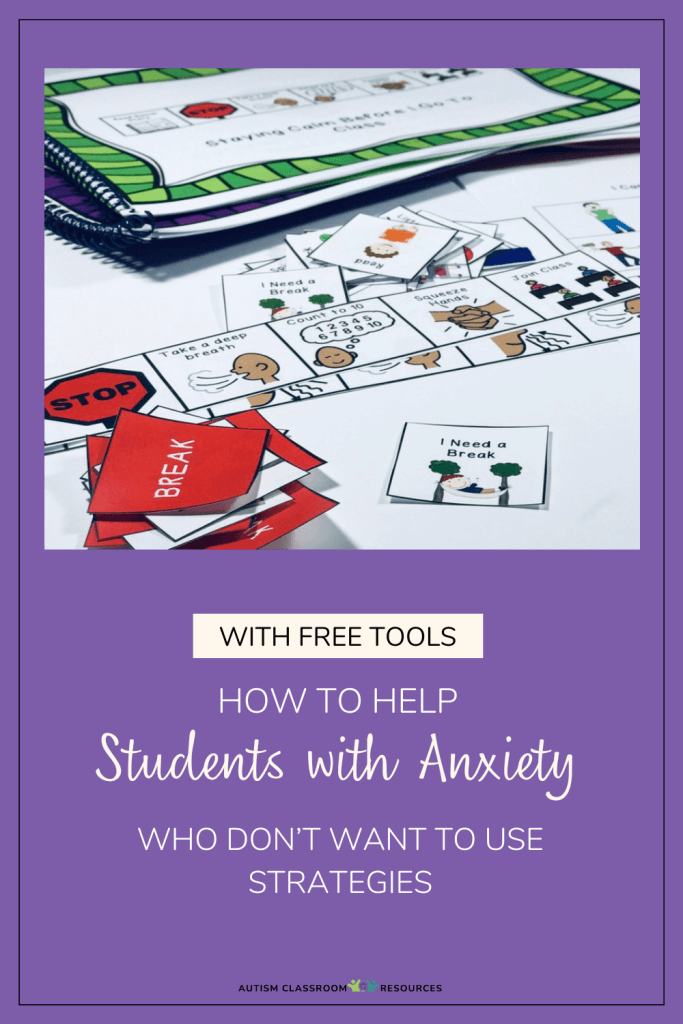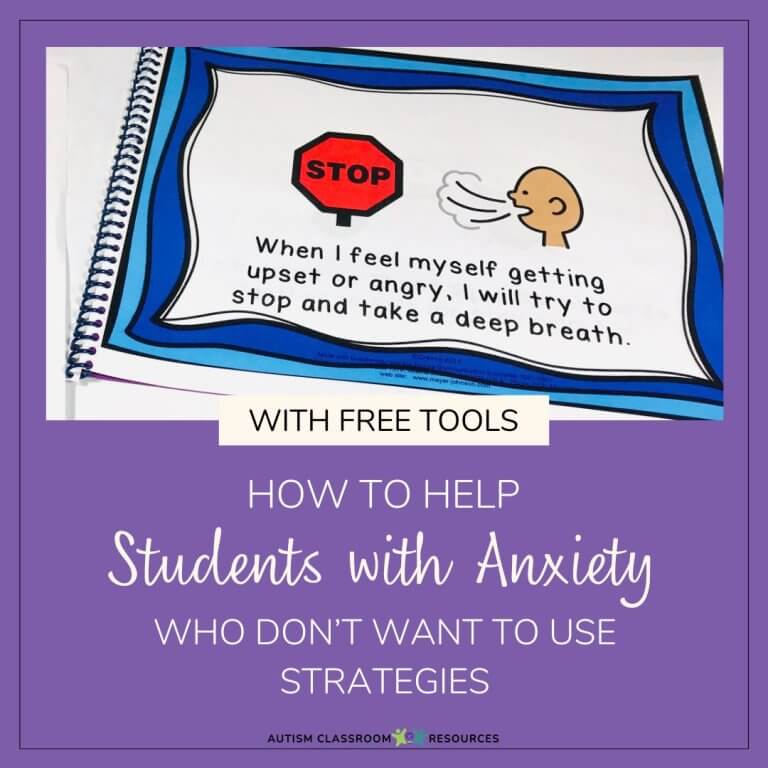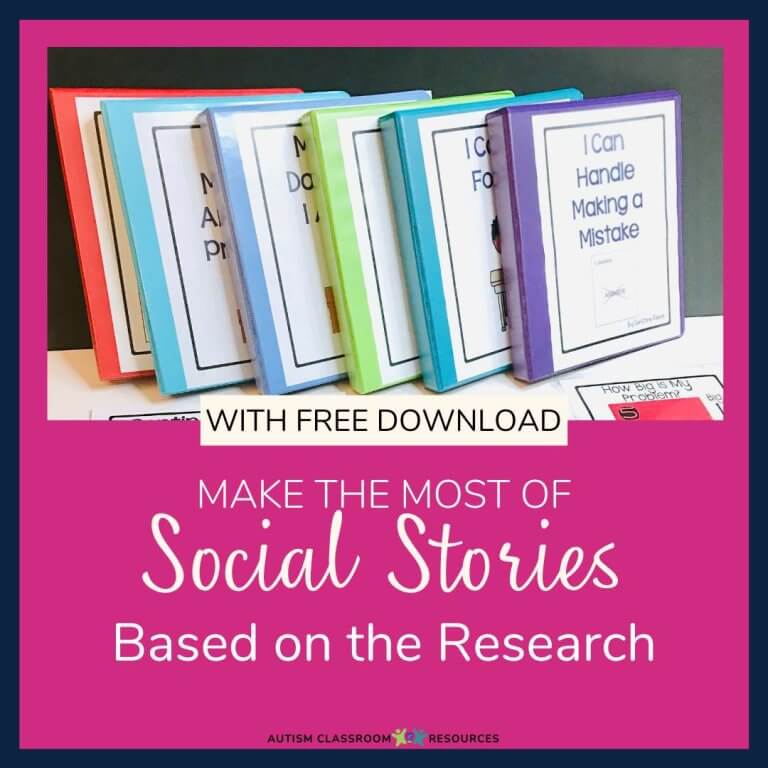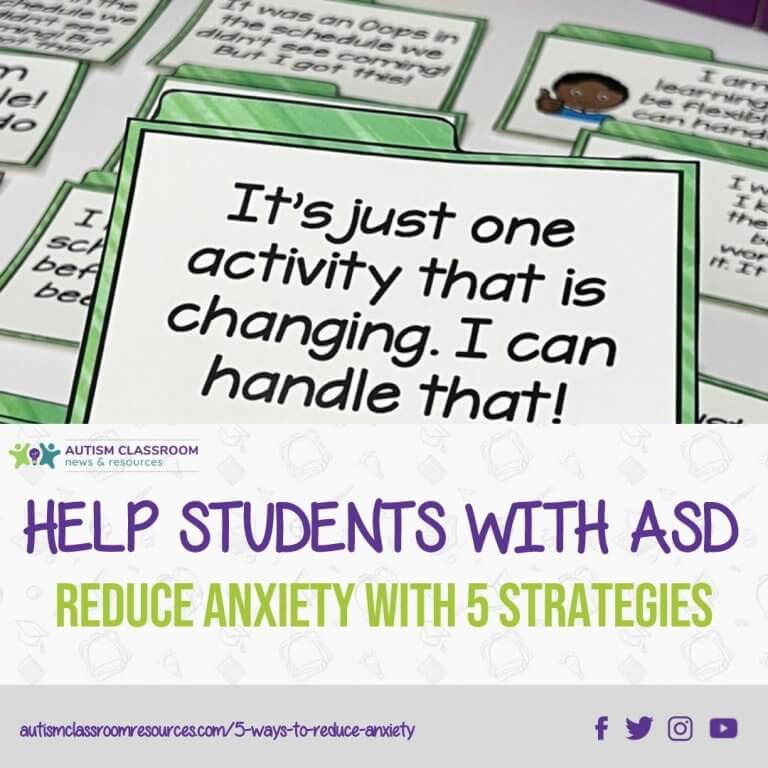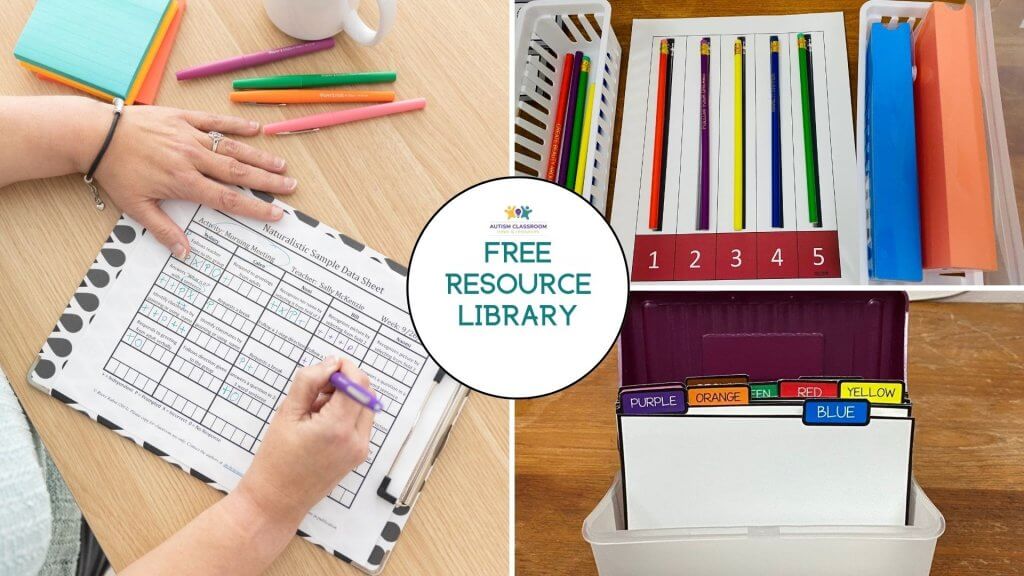Do you struggle with anxiety in students who don’t want to use any strategies? This post will take you through some strategies to help these students on board with using strategies to manage their anxiety more effectively and end the meltdowns. I’ll start with 2 methods to help reduce anxiety in students like these, and then share some covert strategies including some tools (free and paid) to help your students use anxiety reducing strategies that don’t make them stand out.
Table of Contents
Over the years, I have worked a lot with students with anxiety and autism spectrum disorders. And one of the most difficult parts of that work has been getting the students to use self-management strategies (cued by adults or independently). Often they don’t want to stand out or look different.
The irony, of course, is that often that anxiety itself, or the outward behaviors like aggression that sometimes stem from it, makes them stand out more than using some breathing techniques would. This becomes really frustrating when you know that they are capable of using the strategies independently, but they flatly refuse.
So How Do We Help Reduce Anxiety in Students with ASD?
There are essentially two paths I’ve found to helping reduce anxiety with these students. The first is to work on strategies that are as covert in the classroom as possible while still being effective. Essentially this means tailoring your strategies to fit the situational context and, hopefully, make them more acceptable to the student.
The second method is to help the student work on perspective taking to help them see how others see them more clearly. Over time, if it’s effective, students then can choose from a wider range of strategies that can help ease anxiety over time.
So let’s look at both of these in a bit more depth.
Teach More Covert Anxiety Reduction Strategies
If you are looking for strategies in general for addressing anxiety in students, check out this post where I review evidence-based practices for anxiety reduction. I have talked in several places about ways to help reduce anxiety in students including a post about helping then identify feelings of anxiety here. You have to know how to identify when you are feeling anxiety in order to know when to use strategies. Just knowing the strategies isn’t enough.
You also have to know how to kick the strategies in WHILE you are anxious. it’s one thing to do deep breathing when you are a calm (e.g., the student is doing their daily arrival routine). It’s a whole other thing to take deep breaths in stressful situations (e.g., What? A Pop Quiz??).
sign up for free tips each week in your inbox and Grab a free set of visual rules from the resource library
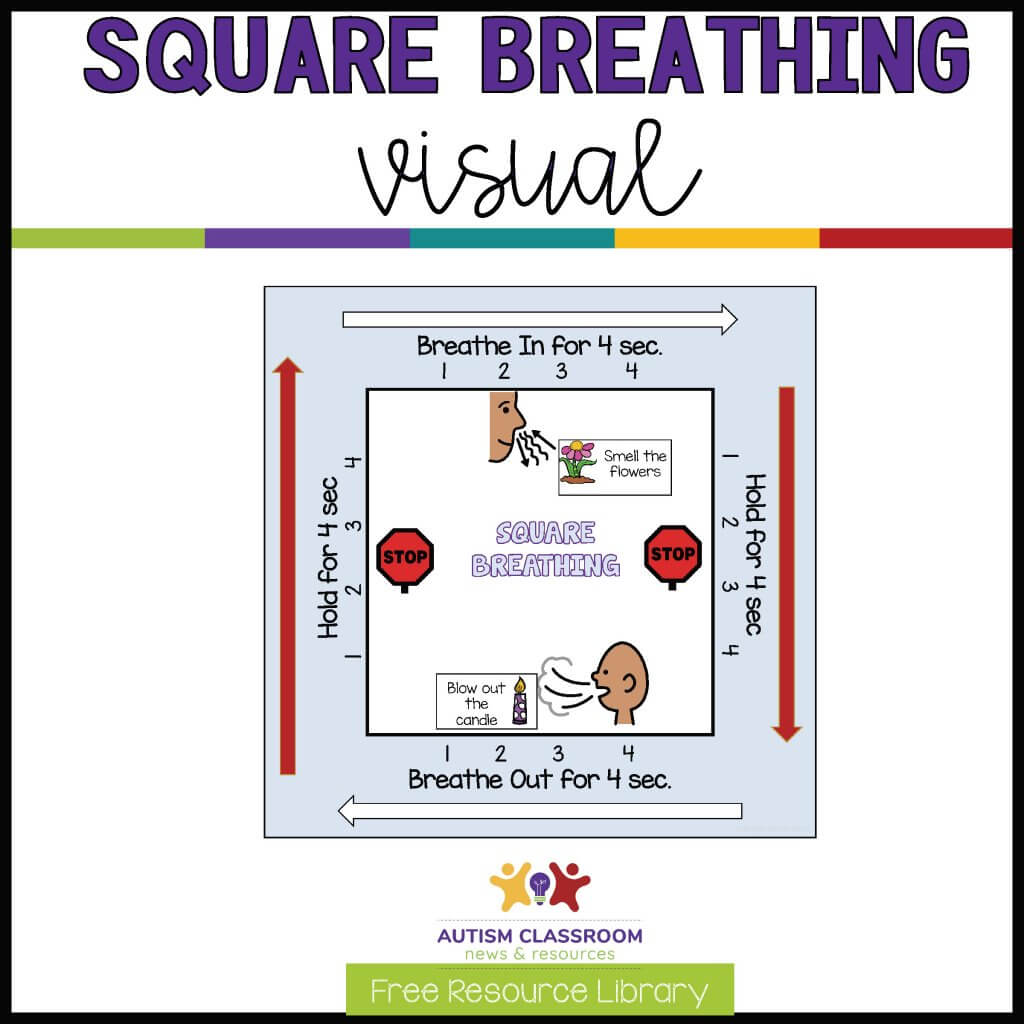
Grab the visual from the Free Resource Library. Click below to navigate and log in or join the free library.
If you have a student who is resistant to using many of the strategies for helping prevent anxious meltdowns or help moderate their anxiety, one way to help them is to focus on teaching strategies that can be cued and used as unobtrusively as possible.
Examples of Covert Anxiety Reduction Strategies
Breathing Exercises
You can teach students to follow a deep breathing pattern at their desk with or without visuals. Sometimes students don’t feel this is too intrusive and are willing to try it in their classroom. Having a set of visuals for deep breathing like I show in #5 in this post can be helpful to cue them to use the strategy by just setting on their desk. Or perhaps develop a secret code the teacher can use to remind them to use breathing exercises if they see the student getting anxious.
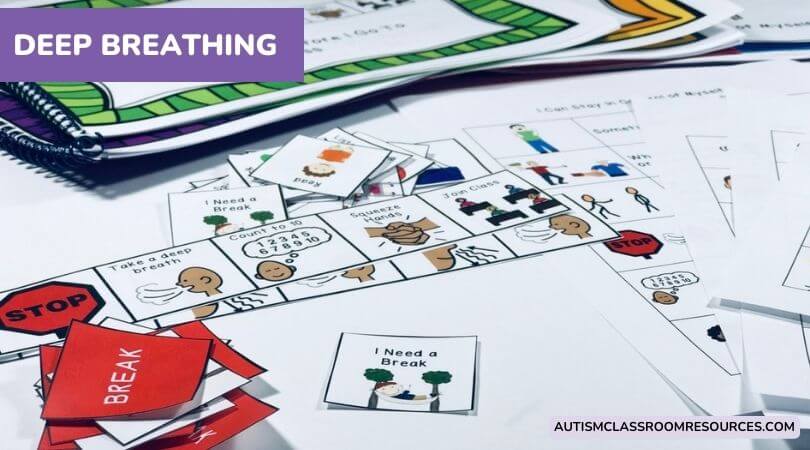
The 5-Point Scale
Using the 5-Point Scale from Keri Dunn Buron can be used to both identify anxiety in students and connect it to strategies to reduce it. One of the things I love about it, in addition to its simplicity, is that you can reduce your discussion about levels of anxiety to just a number. So it’s easy to whisper to a student, “Are you around a 3?” or “What number are you?” as a cue that they need to check on their strategy to use if they are a 3.
Option Cards
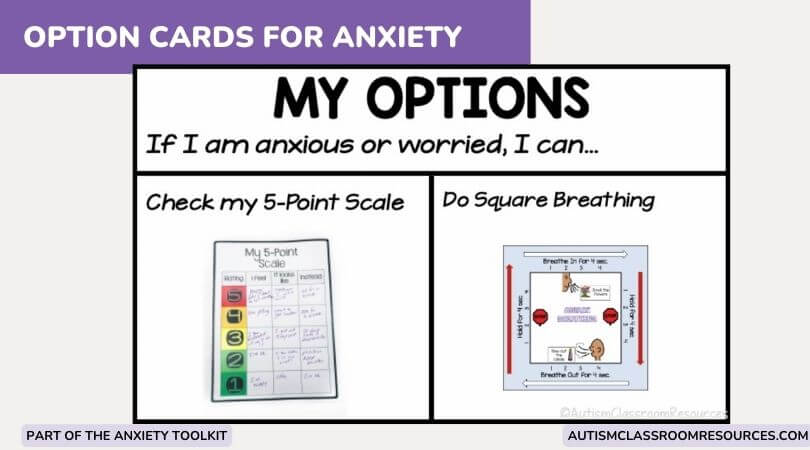
Option cards are a great tool to help students remember their choices or strategies when they encounter something that might spike their anxiety (e.g., not knowing the answer to a question). It visually gives them choices about how to respond. And they are small and can fit in their pocket or just be something the teacher walks by and sets on their desk. One of the options might be to take a break inside or out of the classroom to recollect themselves, or a strategy they can use to remain calm in the classroom.
Positive Self-Statements
I talk about positive affirmations or positive self-statements in this post about evidence-based strategies for anxiety. Clearly if the student needed to say these aloud, which helps some students, then it would be noticeable in class. But if you teach the student to get to the point where they can just say them to themselves (in their head), then they can be a good covert strategy to use to keep anxiety at bay.
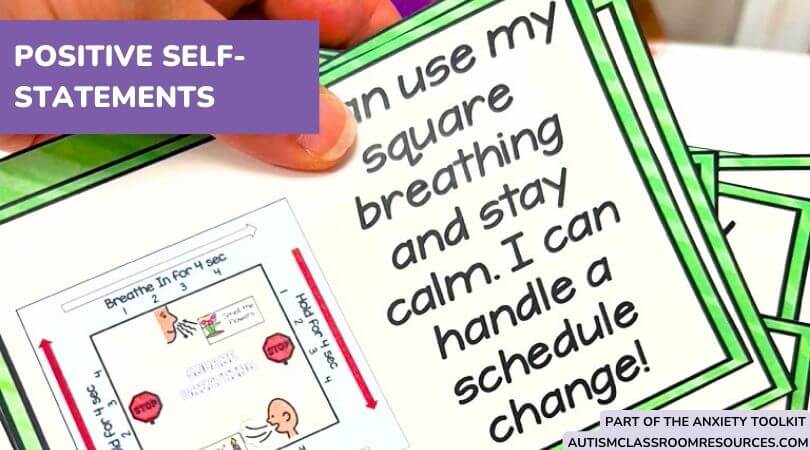
Helping Students with Anxiety Accept Strategy Use in the Classroom
All of the above are common strategies we use to teach students to either prevent anxiety attacks through self-regulation or to reduce anxiety when it arises. All do require teaching the students to use them proficiently, and eventually to self-cue when they need to use them (i.e., recognize the symptoms of anxiety).
So what do we do to help students tolerate using strategies in the classroom?
Social Stories
First, we can use social stories to help them understand others’ perspectives about their behavior in general. Given most students with autism have difficulty with seeing others’ perspectives, social stories are one tool we can use to help them understand. Sometimes anxiety arises from concern that others will see them as different, when having their anxiety get out of control has a bigger impact on other students’ impressions of the student.
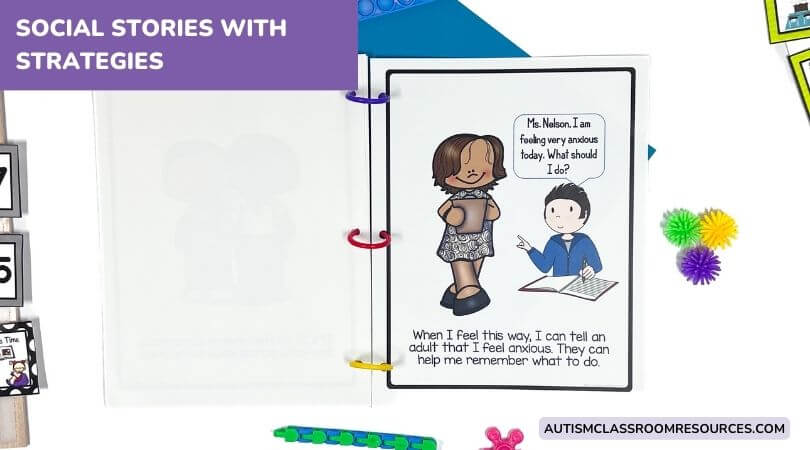
I have a social story that is focused specifically on why students should use strategies in the classroom as part of my Managing Anxiety Toolkit–located here. It addresses some of the common concerns of students who feel that their anxiety sets them apart from other students.
Social stories can also be a great tool in teaching the anxiety-reducing strategies. And overall, we typically use social stories when other students aren’t around to introduce concepts, teach perspective and provide coping strategies. So they don’t make the student stand out in any way in their classroom.
Social Autopsies (or After Action Reports)
Their research name is social autopsies, but as a student asked to use one said to me, “Oooh! I don’t want to do an autopsy–that’s gross.” When I asked him what they should be called, he suggested After Action Reports. And that’s essentially what they are.
After Action Reports are a way for students to review a social or behavioral episode after the fact, determine where the problem was, what needs to be done to resolve it and how to avoid it happening again. After completing them, students typically role play their reaction in similar situations to help them apply the strategies they have chosen.
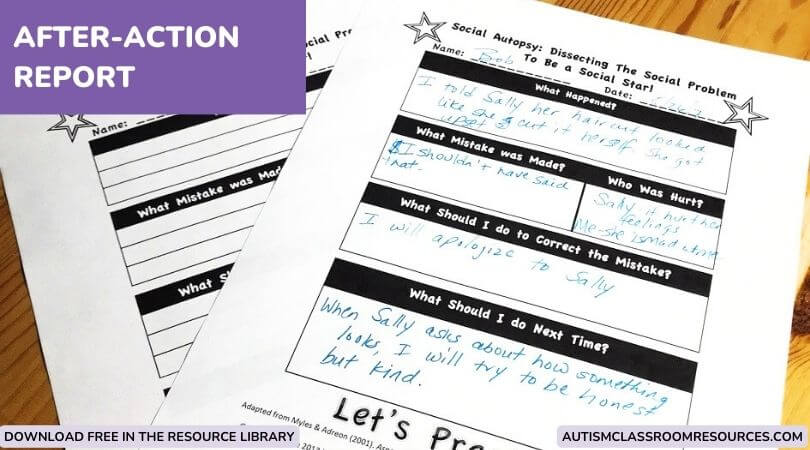
I have had students who like to go back and review them regularly, so I typically keep them in a notebook where students can access their own after action reports. This is a good tool for students who need help identifying that their behavior when they DON’T use strategies might call more attention to them than using the strategies.
We have a free after action report form in the Free Resource Library. And you can read more about after action reports here or listen to the podcast episode here.
Summing Up
So chances are good that you will need a combination of these strategies to anxiety in students. If you are looking for ready-made tools to use with your students, check out the resources below that match your students’ needs. And you can grab a free set of option cards and after action reports in the Free Resource Library.
Looking for More Tools for Addressing Anxiety in Students?
Social Stories Based on Research
-
Sale!
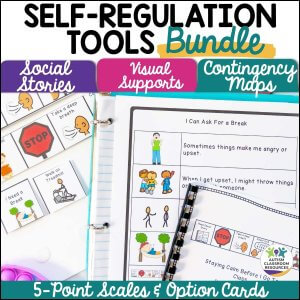
Self-Regulation Support Bundle: Social Stories & Visual Tools for Behavior and Emotions
$18.00Original price was: $18.00.$14.20Current price is: $14.20. Add to cart -

Calm Down Corner Tools: Social Stories & Visuals for Self-Regulation & Behavior
$5.50 Add to cart -
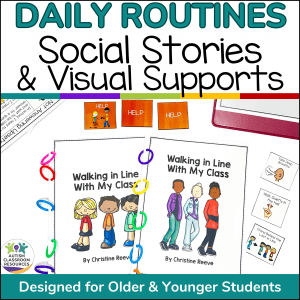
Social Stories on Following Directions and Daily Routines – Behavioral Toolkit for Students With Autism
$4.00 Add to cart -
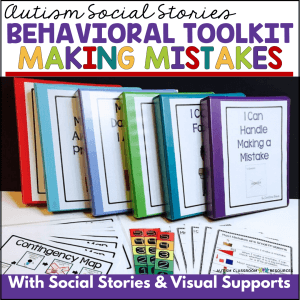
Making Mistakes Social Stories and Toolkit for Behavioral Self-Regulation
$8.00 Add to cart -
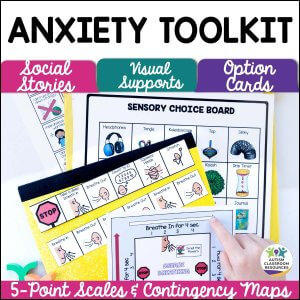
Managing Anxiety with Coping Skills, Social Stories, & Visuals Supports for Self-Regulation
$4.50 Add to cart
